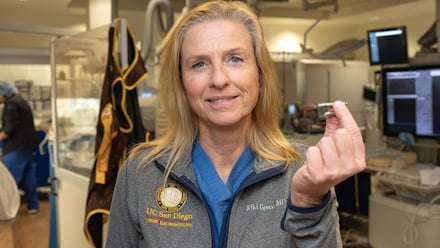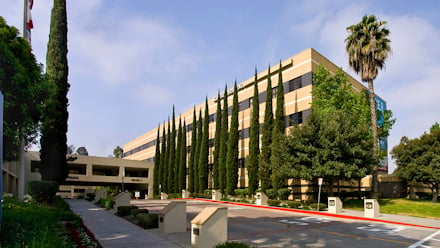Pulmonary Thromboendarterectomy (PTE) Surgery
UC San Diego Health is the worldwide leader in pulmonary thromboendarterectomy (PTE) surgery to remove chronic blood clots from major blood vessels in the lungs.
These deadly blockages hinder your ability to breathe due to a rare complication called chronic thromboembolic pulmonary hypertension (CTEPH). Our specialists are trained in this lifesaving PTE surgery to clear your lung’s arteries.
What Is Pulmonary Thromboendarterectomy (PTE) Surgery?
Sometimes, the chronic blood clots cannot be treated with medication. Without treatment, these clots block off blood flow to the lungs, causing vascular damage and pulmonary hypertension. This condition can lead to heart failure and death.
That’s when pulmonary thromboendarterectomy surgery can help by removing the clots and restoring blood flow. PTE, a complex surgery also known as pulmonary endarterectomy (PEA), was developed at UC San Diego Health.
If you’re not a candidate for PTE surgery, our team also offers balloon pulmonary angioplasty and medical therapy.
Why Choose Us for Pulmonary Thromboendarterectomy Surgery?
Unmatched PTE Surgery Volumes and Outcomes
UC San Diego Health boasts more successful PTEs than any other medical center and the lowest post-surgery mortality rate worldwide. Patients with thromboembolic pulmonary hypertension who have not received appropriate diagnosis and treatment elsewhere are often treated successfully at our Cardiovascular Institute.
Top-Rated Care with a High Survival Rate
Our PTE program is the first to be nationally designated as a Center of Excellence by the American College of Chest Physicians.
We have the highest success rate in the world for pulmonary thromboendarterectomy — performing more PTEs than any other medical center (over 4,800).
Over the past several years, our program has maintained a mortality rate of less than 1 percent, with very low morbidity and excellent outcomes. The procedure can reverse heart failure and is considered more effective than lung transplantation.

A Milestone in PTE Surgery
Goals of PTE Surgery
- Improve blood flow (hemodynamics) from the right side of the heart through the pulmonary arteries.
- Improve symptoms and quality of life. Enable a clear pathway for the blood to engage in normal gas exchange so you can breathe more easily.
- Prevent heart failure and premature death. Alleviate stress on the right side of the heart by correcting pulmonary hypertension.
What Happens During Surgery?
PTE is an 8- to 10-hour procedure that involves opening the chest and attaching the patient to a heart-lung bypass machine, then cooling the patient’s body to about 64-68 degrees Fahrenheit. The cold temperature reduces the body's need for oxygen and protects organs during this unique surgery.
During critical parts, the surgeons turn off the heart-lung machine, stopping circulation for up to 20 minutes, to create a bloodless surgical field. Then they open the arteries blocked by chronic clots and scar tissue. They repeat the on-off process with the heart-lung bypass machine until all the obstructing material is removed.
Who Is a Candidate for PTE?
People as young as 8 years and as old as 89 years, as well as those with complex coexisting conditions, have successfully undergone PTE surgery at UC San Diego Health.
Patients with chronic thromboembolic pulmonary hypertension (CTEPH) who are turned down at other centers are often treated successfully at UC San Diego Health. Accordingly, we often have a very different opinion than the rest of the world when it comes to operability and surgical candidacy.
In addition, in experienced centers, the PTE operation has a lower operative mortality rate than lung transplantation. PTE can also be done electively without waiting for a donor and without the potential long-term problems associated with rejection and immunosuppressive drugs following transplantation.
What if I am Not a Candidate for PTE?
If a patient has a disease or condition unrelated to pulmonary hypertension that would limit their near-term survival, PTE may not be advised. A patient with severe pulmonary fibrosis along with CTEPH, for example, may be a candidate for lung transplantation rather than PTE.
The best way to determine if you are a candidate for PTE is with a series of specialized tests at a center experienced in CTEPH and PTE.
A Team of PTE Experts
You will have a remarkable care team of physicians, surgeons, anesthesiologists, nurses, respiratory therapists and social workers who combine their expertise and passion in our world-class program.
We pride ourselves on giving personal attention to each patient and their family members. We will work closely with your personal physician so that when you return home, your doctor will have a thorough understanding of the care you received at UC San Diego Health, as well as the required follow-up regimen.


